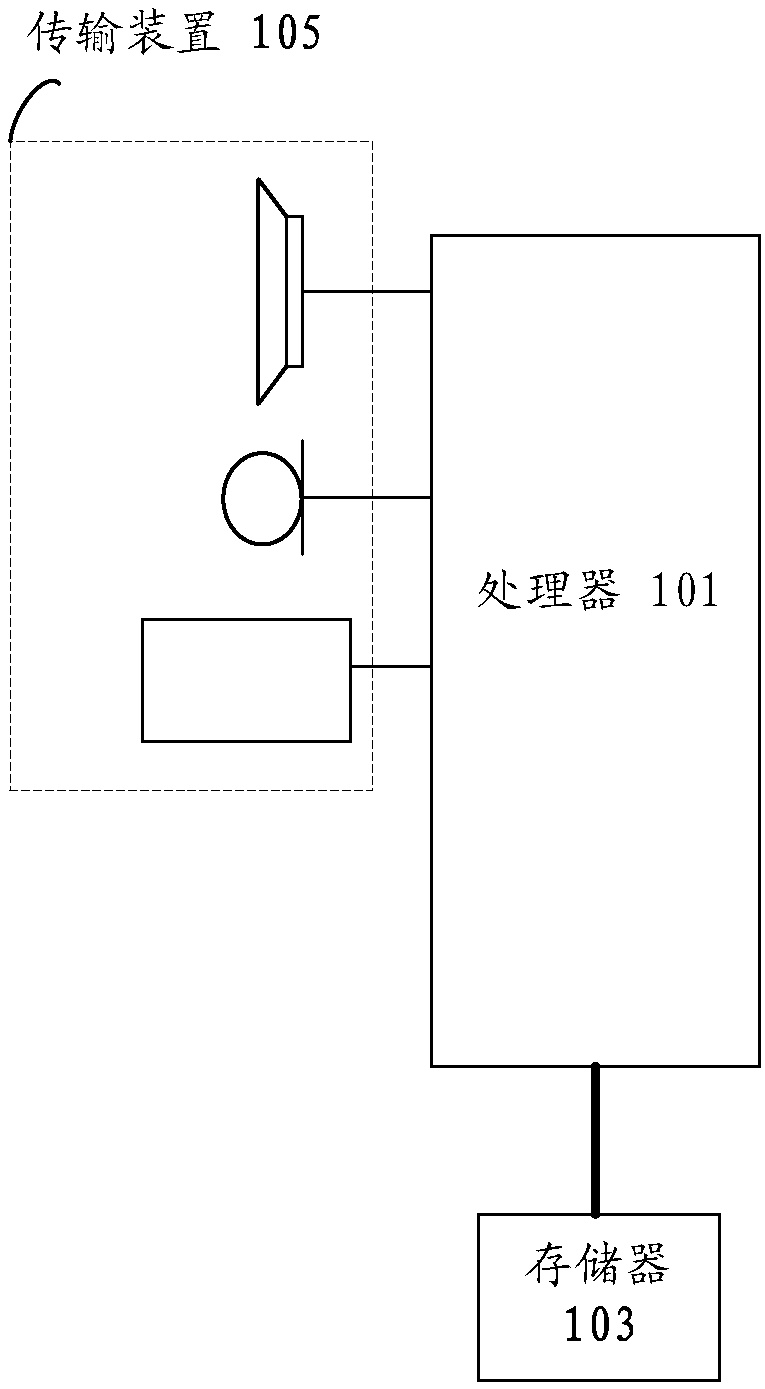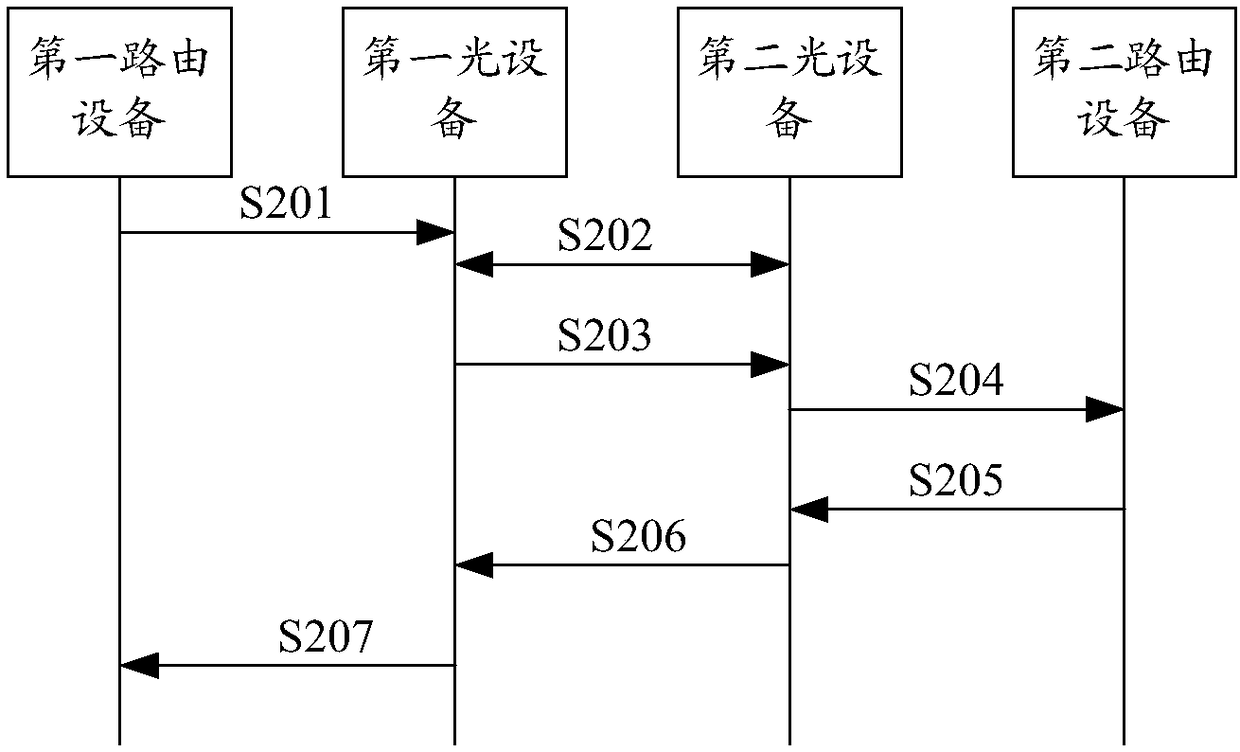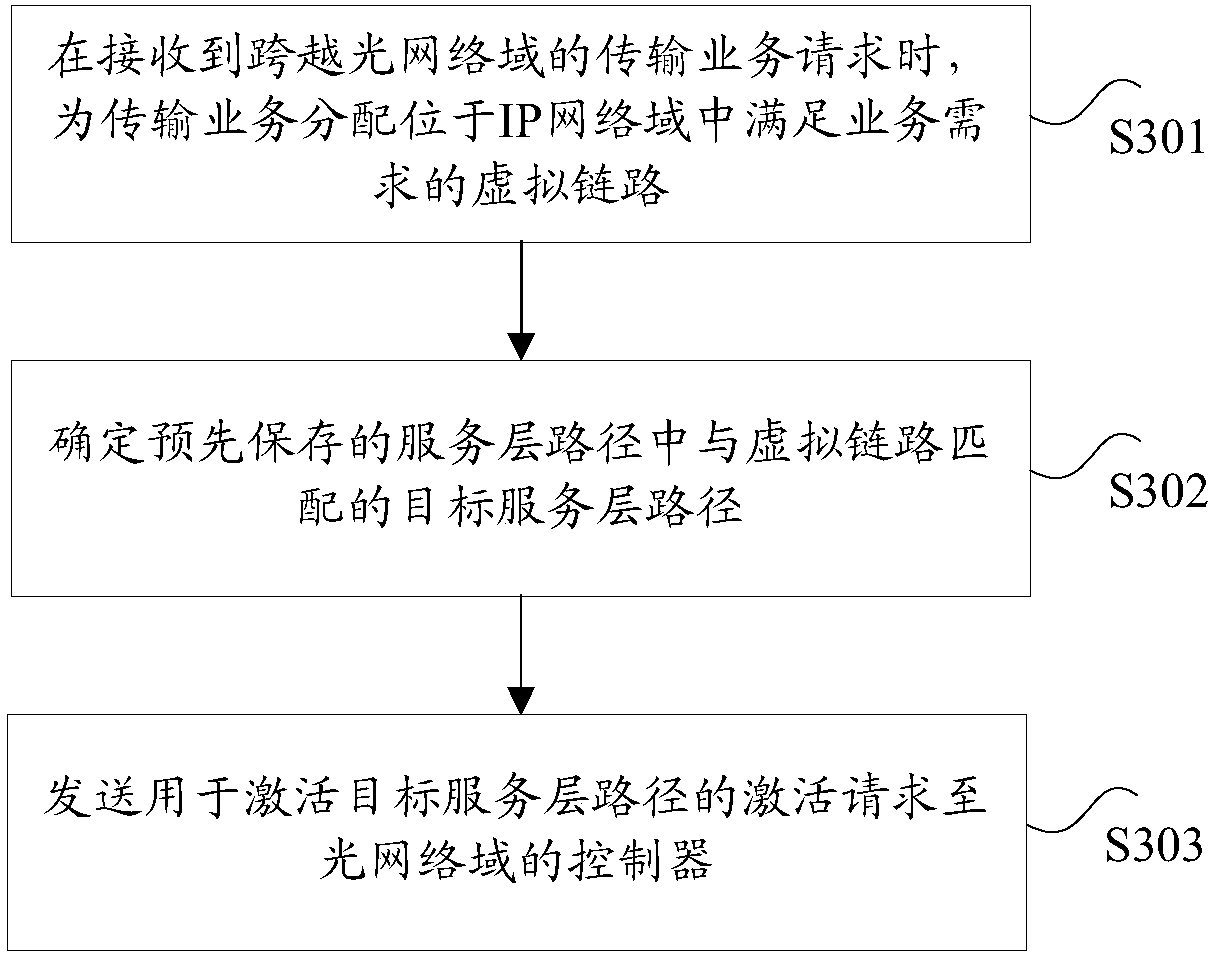Method, apparatus and system for determining fusion path of IP network and optical transport network
An optical transport network, IP network technology, applied in the field of communication, can solve the problems of ignorance of network protection information, low efficiency, low efficiency of routing and traffic optimization, etc.
- Summary
- Abstract
- Description
- Claims
- Application Information
AI Technical Summary
Problems solved by technology
Method used
Image
Examples
Embodiment 1
[0061] The method embodiment provided in Embodiment 1 of the present application may be executed in a mobile terminal, a computer terminal, or a similar computing device. Take running on a computer terminal as an example, such as figure 1 As shown, the computer terminal may include one or more (only one is shown in the figure) processors 101 (the processors 101 may include but not limited to processing devices such as microprocessor MCU or programmable logic device FPGA, etc.), for storing Data storage 103, and transmission means 105 for communication functions. Those of ordinary skill in the art can understand that, figure 1 The shown structure is only for illustration, and it does not limit the structure of the above-mentioned electronic device.
[0062] The memory 103 can be used to store software programs and modules of application software, such as program instructions / modules corresponding to the control method of the device in the embodiment of the present invention, ...
Embodiment approach 1
[0130] The IP network domain requests the optical network domain to create a service layer path and map it to the IP layer virtual link.
[0131] Such as Figure 7As shown, FD (Forwarding Domain, forwarding domain) identifies a device node, FD(P)-1 and FD(P)-2 are two device nodes in the IP network domain respectively, and the virtual link (ie Virtual Link) of the IP layer ) cannot intercommunicate at the IP layer, and need to intercommunicate through the optical network layer. FD-1 and FD-2 are Ethernet layer nodes in the optical network domain (the service layer of which is ODUk). LTP (Logical Terminal Point, logical terminal point) is used to identify the port, LTP-1-1 and LTP-2-1 are the source and sink ports (including source port and sink port) of the service layer path, LTP-4-1, LTP -4-2, LTP-6-1, LTP-6-2 are NNI ports of the Ethernet layer, used to generate Ethernet links, ETH FD indicates the Ethernet layer, etherlink1, etherlink2 are Ethernet links. The IP SDN Con...
Embodiment approach 2
[0139] The IP network domain requests the optical network domain to delete the service layer path.
[0140] Such as Figure 8 As shown, FD (Forwarding Domain, forwarding domain) identifies a device node, FD(P)-1 and FD(P)-2 are two device nodes in the IP network domain respectively, and the virtual link (ie Virtual Link) of the IP layer ) cannot intercommunicate at the IP layer, and need to intercommunicate through the optical network layer. FD-1 and FD-2 are Ethernet layer nodes in the optical network domain (the service layer of which is ODUk). LTP (Logical Terminal Point, logical terminal point) is used to identify the port, LTP-1-1 and LTP-2-1 are the source and sink ports of the service layer path, LTP-4-1, LTP-4-2, LTP-6 -1. LTP-6-2 is the NNI port of the Ethernet layer, which is used to generate Ethernet links. ETH FD indicates the Ethernet domain, and etherlink1 and etherlink2 are Ethernet links. The IP SDN Controller is the SDN controller of the IP network domain, ...
PUM
 Login to View More
Login to View More Abstract
Description
Claims
Application Information
 Login to View More
Login to View More - R&D
- Intellectual Property
- Life Sciences
- Materials
- Tech Scout
- Unparalleled Data Quality
- Higher Quality Content
- 60% Fewer Hallucinations
Browse by: Latest US Patents, China's latest patents, Technical Efficacy Thesaurus, Application Domain, Technology Topic, Popular Technical Reports.
© 2025 PatSnap. All rights reserved.Legal|Privacy policy|Modern Slavery Act Transparency Statement|Sitemap|About US| Contact US: help@patsnap.com



